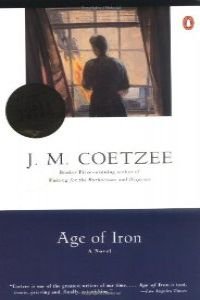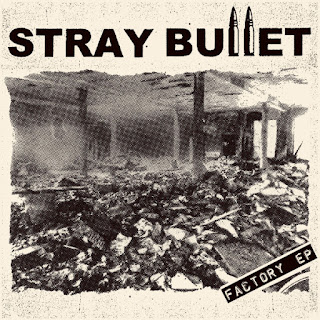Sobriquet 37.12
The following post was originally published on 12/22/07.
Having already read Sheila Roberts's essay on the same topic, I must admit that I am still not wholly convinced that Coetzee based the structure of his novel, in part, around the organization of Dante's famed poem, though Hoegberg's article does make a more compelling case than Roberts's. Though he identifies the conflict between Black and White South Africans in the nineteen-eighties as an echo of the White Guelph/Black Guelph hostilities tearing through Dante's thirteenth- and fourteenth-century Florence among other analogues, it is the emphasis upon direct experience that really forms the meat of Hoegberg's article. Both Dante and Mrs. Curren, the critic argues, must undertake a journey into the Underworld (literally in the Inferno and figuratively in Age of Iron) in order to grasp the truth about the political strife afflicting their respective societies.
Overall, Hoegberg's essay does identify a number of parallels between Coetzee's novel and Dante's poem, a good portion of which, at the very least, seem to support the critic's assertion that Coetzee may have crafted a parody--which, according to Linda Hutcheon is an "ambivalence set up between conservative repetition and revolutionary difference"--of the Inferno (77). In the end, however, Hoegberg arrives at many of the same conclusions about Coetzee's literary purposes as quite a few fellow critics, suggesting that if Coetzee did, in fact, imbue his novel with the intertextual references the critic identifies, it is only a very minor aspect of Age of Iron, and one that merely serves as one of several ways for Coetzee to comment on the individual's struggle to preserve humanity and achieve understanding in the face of violent social struggle.
For tomorrow: Read another article and keep working on the extra-curricular writing.
Okay, so I spent the early part of the day packing up my office and helping one of my coworkers move the contents of her old office to her new one, which means that I was well-neigh tuckered out by midday. To make myself feel a bit more academically productive, though, I printed out a few hundred pages of criticism from some PDF files I'd received via the university's interlibrary loan service. Still, the printing, collating, and stapling of a dozen or so critical articles hardly qualifies as the sort of work I'd hoped to accomplish today so, after a few hours of socializing, I managed to read David E. Hoegberg's "'Where is Hope': Coetzee's Rewriting of Dante in Age of Iron."
Having already read Sheila Roberts's essay on the same topic, I must admit that I am still not wholly convinced that Coetzee based the structure of his novel, in part, around the organization of Dante's famed poem, though Hoegberg's article does make a more compelling case than Roberts's. Though he identifies the conflict between Black and White South Africans in the nineteen-eighties as an echo of the White Guelph/Black Guelph hostilities tearing through Dante's thirteenth- and fourteenth-century Florence among other analogues, it is the emphasis upon direct experience that really forms the meat of Hoegberg's article. Both Dante and Mrs. Curren, the critic argues, must undertake a journey into the Underworld (literally in the Inferno and figuratively in Age of Iron) in order to grasp the truth about the political strife afflicting their respective societies.
Overall, Hoegberg's essay does identify a number of parallels between Coetzee's novel and Dante's poem, a good portion of which, at the very least, seem to support the critic's assertion that Coetzee may have crafted a parody--which, according to Linda Hutcheon is an "ambivalence set up between conservative repetition and revolutionary difference"--of the Inferno (77). In the end, however, Hoegberg arrives at many of the same conclusions about Coetzee's literary purposes as quite a few fellow critics, suggesting that if Coetzee did, in fact, imbue his novel with the intertextual references the critic identifies, it is only a very minor aspect of Age of Iron, and one that merely serves as one of several ways for Coetzee to comment on the individual's struggle to preserve humanity and achieve understanding in the face of violent social struggle.
For tomorrow: Read another article and keep working on the extra-curricular writing.
Works Cited
Hoegberg, David E. "'Where Is Hope?': Coetzee's Rewriting of Dante in Age of Iron." English in Africa. 25.1 (1998): 27-42.
Hutcheon, Linda. A Theory of Parody: The Teachings of Twentieth-Century Art Forms. New York: Methuen, 1985.
Hutcheon, Linda. A Theory of Parody: The Teachings of Twentieth-Century Art Forms. New York: Methuen, 1985.




Comments
Post a Comment